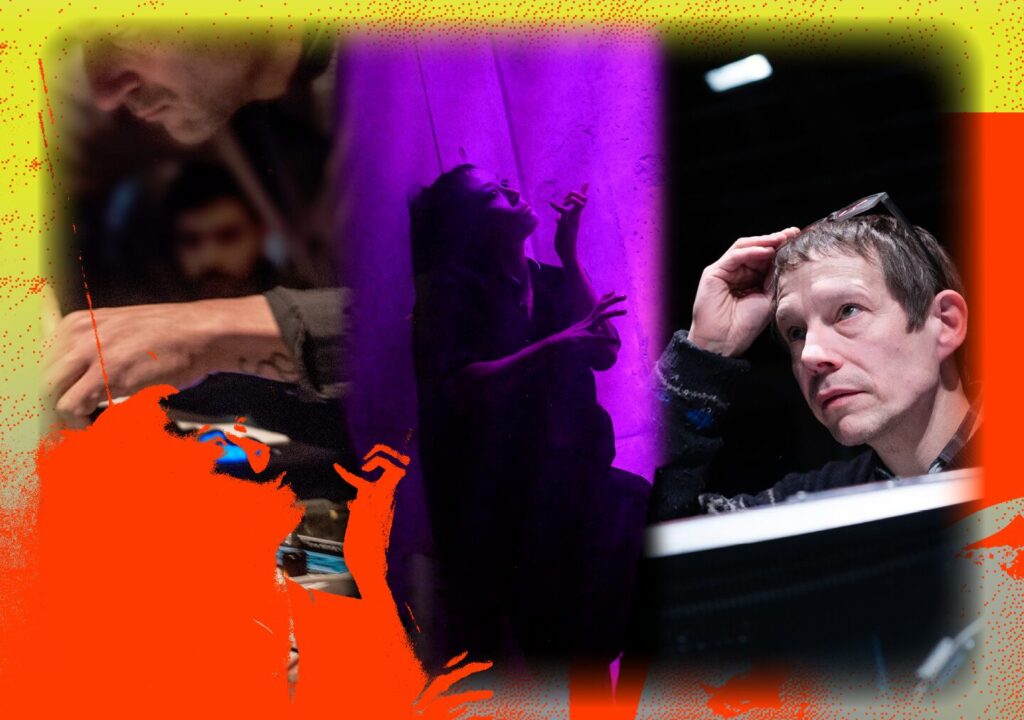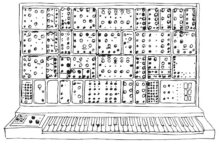In 1957, Daphne Oram departed the prestigious BBC Radiophonic Workshop, to start working alone on a machine that would soon revolutionise how music could be composed. She created ‘Oramics’ – a system that allows you to literally draw compositions, transforming lines, curves, and shapes marked onto 35mm film into sound, through the way the shapes manipulate the light received by photocells.
Oramics was not only pioneering, but visionary. Though overlooked for a long time, today the project inspires artists all over the world – not only musicians but dancers, performers, and audiovisual artists. “I am fascinated by this strange machine, its unbridled energy, and her passion for this project,” says Pit Przygodda, a German sound artist and instrument builder. “When I discovered that I was building a musical machine, I started looking at what had already been created in this direction and who had done something similar. That’s how I came across Daphne Oram. Her entire oeuvre – both the machine and the music – is unique and shows an artist who was truly looking for something new, something she felt deeply [revealing] an innovative path leading to the development of music and its tools.”
Przygodda, together with Yôko Higashi, a Japanese performer and choreographer, and Lionel Marchetti, a French composer of musique concrète, was inspired by the sensuality and physicality of sound in Oram’s experiments with analogue recording, tapes, and early electronics, where through disturbing warmth and sensory abstraction, sound becomes almost physical, present, as if it could be felt through the air. This was the starting point for J Orbit — g…, a unique collaborative project that will be presented at this year’s Papiripar Festival in Hamburg.
“Lionel gave me an Oramics CD a few years ago, and I was delighted and surprised to discover what year the composition was made. I love the warmth of these sounds – far from the ‘cold’ world of electronics – they are very poetic. When I look for electronic sounds to compose with, I often try to find a similar, patinated timbre like Daphne’s,” says Higashi.
Their collaboration is not just a concert or performance, but an immersion into three-dimensional synaesthesia, where image, sound, and movement interact in real-time. All of this is presented under the symbolic patronage of Oram, whose spirit, like an electroacoustic shadow, hovers over the whole project. The image of a ‘spectral presence in outer space’ was taken as an early prompt, a proposal that does not give a ready answer but asks questions – just as Oram did, treating art as a question asked of the world through technology, sound, and presence.
The performance will be based around Przygodda’s invention, the Silhouette synthesiser, which transforms images into sound. A camera above a light table captures Higashi’s body movements, with every change in gesture, distance, or silhouette affecting the colour and rhythm of the sound. Images – both live-captured and pre-recorded – are converted into audio signals.
“The Silhouette synthesiser was inspired by the optical soundtrack technology used in old 35 and 16mm films,” says Przygodda. While studying an animation course in his early 20s, a teacher had showed him the work of Canadian artist Norman McLaren, which often incorporated graphical sound, while later, he also discovered the connections to two earlier 20th century experiments – Oskar Fischinger’s ‘Sound Ornaments’, another exploration of ‘drawn sound’, and Edwin Welte’s ‘Phototone Organ’, a kind of optical sampler that could play back photographically drawn ‘recordings’ of other instruments. “At the time, I was making music and experimental film, so I started dreaming of an instrument that would use the concept of an optical soundtrack in real time. I wanted to enter the sound wave. It took decades to build the prototype,” he says.
For J Orbit — g…, the synthesiser will capture the sounds generated by Marchetti, convert them into images, and project them back onto Higashi’s body. A closed circuit will be created: the body generating sound, the sound becoming an image, and the image returning to the body. It is a choreographed dance of light and sound in which all elements – movement, image, and sound – are equally important. “Each of these elements has the same weight – we create this performance through a continuous exchange of ideas,” says Higashi.
“When I showed the prototype to other people, something surprising happened, they were immediately drawn to the audiovisual combination,” says Przygodda. “They looked at the monitor and listened to the sounds, experiencing the multimedia synthesis inside their heads!” I realised I was creating a multimedia instrument that carries a kind of art. I started collecting special visual materials to combine with a live musical lecture. I call these trials ‘audiovisual essays’.”
What the artists have in common is not only a fascination with Oram, but also a sharing of her quest. Higashi sees corporeality and plasticity in her music, Marchetti, a kind of dance with a loudspeaker, in which sound gains shadow, gesture, and presence. “There is a real physicality to Daphne’s sounds, Higashi says. “Each one is also very visual – when I listen with my eyes closed, I get the impression that an invisible body is performing a painting action with the help of sound.”
It’s fitting that it will all come together as part of the Papiripar Festival – an event redefining Hamburg’s experimental music and sound art scene. Curated by Felix Kubin along with along with Nika Son and Florian Bräunlich, the festival combines concerts, performances, installations, and lectures into a coherent yet unpredictable experience. Kubin, a composer and sound artist, is known for his love of crossing genre and media boundaries, and was the one who brought the three artists together to create a project inspired by Oram. The result is a tribute to a pioneer of electronic music, and a rethinking of the very language of art, in which sound, image, and body cease to be separate entities and become part of a single organism.
“Reading about people like Oram gives me comfort and hope in moments of doubt and darkness,” says Przygodda. “It’s a message not to give up when you follow your voice, even if nobody (or hardly anybody) understands what you are working on.”
J Orbit — g… will be debuted at Hamburg’s Paripar Festival, which takes place from 24 to 27 April. For tickets, the full line-up, and further information, click here.



